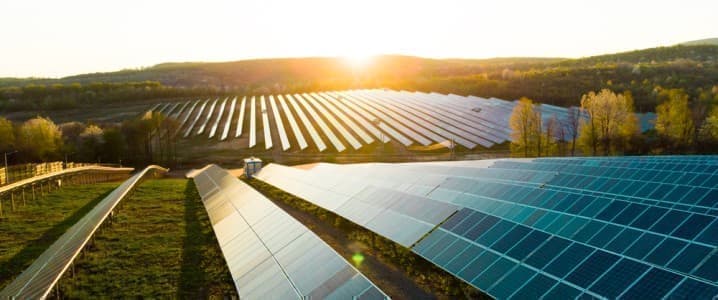With high energy prices and supply chain disruptions creating shortages of key renewable energy components and materials, emerging markets are reassessing how to build out utility-scale solar power to accelerate their energy transitions.
After more than a decade of decline, the cost of solar photovoltaic (PV) panels has risen around the world, due primarily to the increasing cost of solar-grade polysilicon in China.
A key component in PV panels, polysilicon spot market prices rose from less than $7 per kg in July 2020 to $39 in August 2022. Though they subsequently fell to as low as $18 in January of this year, by early February prices were back above $30.
China is estimated to account for more than 80% of all manufacturing stages of solar panels − including polysilicon, ingots, wafers, cells and modules − while its share of key elements including polysilicon and wafers is expected to exceed 95% by 2025 based on current manufacturing expansion works, according to the International Energy Agency (IEA).
Supply and demand dynamics
There are good reasons to believe that rising costs will not slow the uptake of solar. For one, demand was robust in 2022, with 268 GW of new capacity added worldwide as prices for coal and natural gas reached record highs. Globally, installations are expected to reach 315 GW in 2023, according to BloombergNEF.
Utility-scale solar and onshore wind are the two cheapest forms of renewable energy generation in a large majority of countries around the world, and the IEA expects global solar PV capacity to rise by nearly 1500 GW in the 2022-27 period, surpassing natural gas by 2026 and coal by 2027.
Solar and wind power also overtook natural gas in Europe’s generation mix in 2022, thanks in part to a three-fold increase in rooftop solar applications over the course of the year.
Another reason for optimism is that analysts expect the price of polysilicon to fall further, attributing the initial increase in 2020 to floods in China in August of that year, and last summer’s rise to a heatwave that caused Chinese polysilicon plants to halt production. Though ongoing supply chain disruptions remain a concern, the price of polysilicon is forecast to reach $10-$15 per kg as more supply comes onto the market, according to BloombergNEF.
For rooftop solar, the decline in price between 2013 and 2020 was driven by an increase in the supply of solar cells and modules on the market, whereas advancements in technology and the growing scale of production are expected to cause costs to decline from 2023.
Continued access to critical minerals will be key to building enough renewable energy infrastructure to support the energy transition.
A January 2023 study in the scientific journal Joule concluded that the supply of 17 key materials should be sufficient to keep warming under 1.5°C above pre-industrial levels in even the highest-demand scenarios. Ensuring that these resources are mined without undue environmental damage or exploitative labour practices, however, may pose a greater global challenge.
GCC test case
In some respects, the GCC is an ideal test case for solar in emerging markets, given the region’s high solar yield, abundance of available land and clear government interest − including incentives and investment − in increasing clean energy.
Solar power accounted for 97% of the GCC’s installed generation capacity for clean energy as of 2021, with the UAE and Saudi Arabia, respectively, making up 80% and 13% of the total. Both generated 100% of their clean energy from solar, according to the International Renewable Energy Agency.
The expansion of solar depends on steady financing, and both countries have public-private partnership frameworks to tap into global capital markets and issue green bonds for climate-related projects. Green bonds and sukuk (Islamic bonds) issuances hit a record $8.5bn in the GCC in 2022 from 15 deals, while six deals in 2021 totalled $605m.
Saudi Arabia’s Public Investment Fund has released two green bonds, worth $3bn and $5.5bn, to raise money for environmental, social and governance-compliant climate initiatives as part of its Green Finance Framework for the 2021-25 period.
Predictability in terms of maintenance and low operating risk make solar projects attractive investments for governments looking to meet net-zero goals, with hydrocarbons revenue providing stable financing during the transition phase.
The UAE is the Mohammed bin Rashid Al Maktoum Solar Park, the world’s fourth largest, and plans to invest Dh600bn ($163.3bn) in clean energy over the next three decades to meet its goal of net-zero emissions by 2050.
Hydrogen’s complementary role
GCC countries are diversifying their renewable energy strategies to include green hydrogen, which can be generated from clean solar.
Countries like Bahrain and Qatar that have less available land are also developing hydrogen capacity.
“Given the limited space available in Bahrain for power generation from solar and wind sources, the country has an opportunity to grow capabilities in green hydrogen as a constant and clear power source,” Ian Roos, CEO of Pavilion Renewables, told OBG.
Bahrain declared green and blue hydrogen a goal when it published its Industrial Strategy 2022-26 in January 2022, kick-starting the industry.
“Tangible investments are actually happening in this space in Bahrain, as well as elsewhere in the GCC, and the potential to attract even further investment is significant as much of the technology needed is now being tested locally,” Roos added.
More Top Reads From Oilprice.com:
- U.S. Energy Infrastructure To Get A Major Bump
- Oil Prices Rise Ahead Of Fed Interest Rate Decision
- Tesla’s New Charging Standard Makes Competition Near-Impossible


















